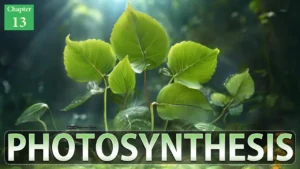Table of Contents
Muscle Tissue: – Characteristics, Structure, Types and Function
In this article we will discuss about the Muscle tissue: – Definition, Characteristics, Structure, Types and Function
Definition of Muscle Tissue
- Muscle tissue is composed of cells that have the ability to shorten or contract in order to produce movement of the body parts.
- Muscle fibres contract (shorten) in response to stimulation, then relax (lengthen) and return to their uncontracted state in a coordinated fashion. Their action moves the body to adjust to the changes in the environment and to maintain the positions of the various parts of the body.
- In general, muscles play an active role in all the movements of the body
Properties of Muscular Tissue
- Contractibility – Ability of muscle cells to shorten
- Excitability – Muscle tissue responds to a stimulus delivered from neuron or hormone
- Extensibility – Ability to be stretched
- Elasticity – Ability to recoil back to its original length after being stretched
Structure of Muscular tissue
- Muscular tissues are bundled together and surrounded by tough connective tissue known as epimysium
- The tissue made of many muscle fibres (myocytes)
- Fascicles are surrounded by a protective layer known as perimysium
- Muscle fibres are composed of numerous fine myofibrils
- Muscle fibres can contract and relax
- Muscles take part in locomotion and movements
Types of Muscle Tissue
- There are three types of muscle tissues in animal
- Skeletal muscle
- Cardiac muscle
- Smooth muscle

1. Skeletal muscle
- Skeletal muscles are attached to the skeleton
- They are also known as striated muscles because of the presence of alternate patterns of light and dark bands
- These light and dark bands are highly organized structures of actin, myosin, and proteins.
- These add to the contractility and extensibility of the muscles
- Skeletal muscles are also known as voluntary muscles
- Skeletal muscle tissue is composed of long cells called muscle fibers that have multinucleated
- They play a vital role in everyday activities
2. Smooth muscle
- These muscle cells are spindle-shaped with a single nucleus
- Smooth muscle is found in the walls of hollow organs throughout the body
- These are non-striated, involuntary muscles controlled by nervous system
- The actin and myosin filaments are very thin and arranged randomly, hence no striations
- It stimulates the contractility of the digestive, urinary, reproductive systems and blood vessels
3. Cardiac Muscle Tissue
- Cardiac muscle tissue is present only in the heart
- They are single celled and uninucleate
- The cells of the cardiac muscles known as the cardiomyocytes are striated
- These are involuntary muscles and the heart pumps the blood through cardiac contractions
- Muscle cells, unique junctions called intercalated discs (gap junctions)
- Intercalated discs are the major portal for cardiac cell to cell communication
Function of Muscle Tissue
Functions of Skeletal Muscle
- It maintains body posture nad regulates the body temperature
- Skeletal muscles connects, controls the motions of the skeleton
- It is responsible for performing muscular involuntary movements
- It is responsible for the erect posture of the body. The sartorius muscles in thighs are responsible for body movement
- The skeletal muscles protect the internal organs and tissues from any injury and also provide support to these delicate organs and tissues
- These also support the entry and exit points of the body
Functions of a Cardiac Muscle
- Cardiac muscle regulate the functioning of the heart by the relaxation and contraction of the heart muscles
- The cardiac muscles function as involuntary muscle.
- The cardiac muscles are also involved in the movement or locomotion.
- The cardiac muscles work without stopping, day and night. They work automatically and make the heart contract so that the heart can squeeze the blood vessels and release them so that the heart can fill up with blood again.
- The heart comprises a specialized type of cardiac tissue, which consists of “pacemaker” cells. These contract and expand in response to electrical impulses from the nervous system.
Functions of a Smooth Muscle
- Like all other types of muscles, smooth muscles are also involved in contraction and relaxation. Other functions of smooth muscles include:
- It is involved in the sealing of orifices.
- It produces connective tissue proteins such as collagen and elastin.
- Transports chyme (a pulpy acidic fluid) for the contractions of the intestinal tube.
- Smooth muscle plays a vital role in the circulatory system by maintaining and controlling the blood pressure and flow of oxygen throughout the body.
Frequently Asked Questions: –
What are the three types of muscle tissue?
There are three types of muscle tissues in animal
1. Skeletal muscle
2. Cardiac muscle
3. Smooth muscle
What is the main function of muscle tissue?
They main function of muscle tissue is shorten or contract in order to produce movement of the body parts.
You may also like: –
- Epithelial Tissue Structure, Types and Function
- Connective tissue: Definition, Structure, Types and Function
For more detailed information about Structural Organisation in Animals, download now full study material as PDF and if you want to learn more detailed information about Structural Organisation in Animals, visit YouTube Channel.



![[PPT] The living world Class 11 Notes](https://rajusbiology.com/wp-content/uploads/2024/06/PPT-The-living-world-Class-11-Notes-300x169.webp)
